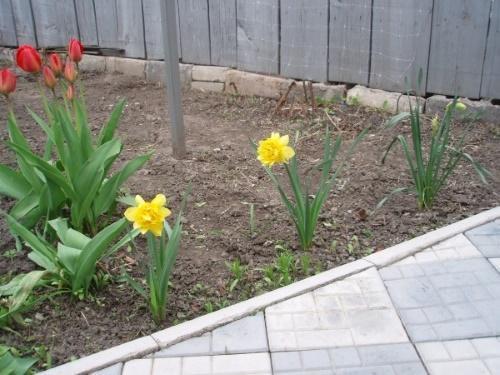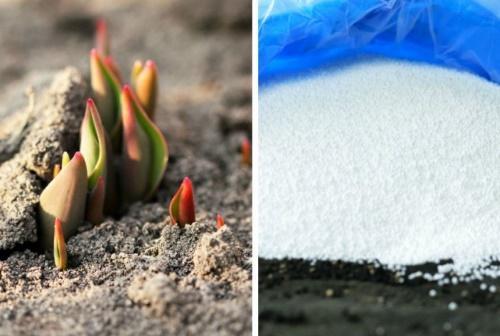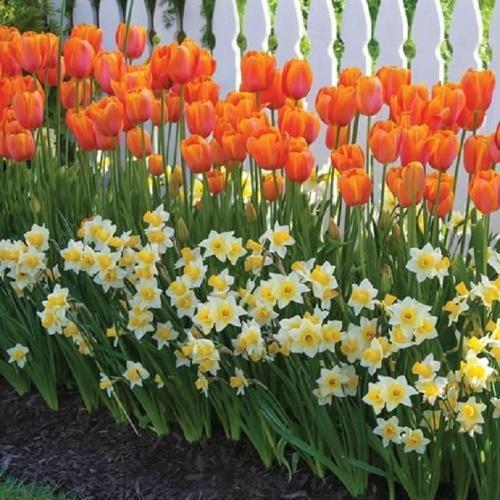How to feed daffodils and tulips in spring?
 Bulbous plants such as tulips and daffodils are found in every garden, even the smallest flower bed. It is their delicate inflorescences that bloom first, indicating the end of winter. These unpretentious flowers are also good because they require minimal maintenance. Even in abandoned areas, they continue to bloom annually for a long time and actively grow. True, the size of the buds is getting smaller every year, and the flowering itself becomes scarce. If you want your bulbs to maintain the quantity and quality of flowering, they need to be fertilized in a timely manner. It is especially important to do this in early spring, when the bushes wake up from hibernation and form buds. Knowing how to feed daffodils and tulips in spring can help you get more flowers. In addition, the bulbs will be more developed, which means they will give more babies.
Bulbous plants such as tulips and daffodils are found in every garden, even the smallest flower bed. It is their delicate inflorescences that bloom first, indicating the end of winter. These unpretentious flowers are also good because they require minimal maintenance. Even in abandoned areas, they continue to bloom annually for a long time and actively grow. True, the size of the buds is getting smaller every year, and the flowering itself becomes scarce. If you want your bulbs to maintain the quantity and quality of flowering, they need to be fertilized in a timely manner. It is especially important to do this in early spring, when the bushes wake up from hibernation and form buds. Knowing how to feed daffodils and tulips in spring can help you get more flowers. In addition, the bulbs will be more developed, which means they will give more babies.
When choosing fertilizers for bulbous plants, give preference to preparations that dissolve and absorb quickly. Daffodils and tulips have a small root system - fertilizers should start working soon.
How to feed daffodils and tulips in the spring before flowering?

- superphosphate - 50 g;
- nitrophosphate - no more than 50 g;
- urea - 25-30 g;
- potassium salt - 30 g;
- bone meal - up to 40 g.
Mineral complexes of prolonged action also work well, for example, Kemira.
 During the period of active growth, give your flowers a little organic matter by crushing the flower bed with wood ash. With the onset of flowering, it is better to use liquid dressings. Water the flowers several times with the solution mullein.
During the period of active growth, give your flowers a little organic matter by crushing the flower bed with wood ash. With the onset of flowering, it is better to use liquid dressings. Water the flowers several times with the solution mullein.
Top dressing of daffodils and tulips after flowering
 When the bulbs have faded, exclude preparations with a high nitrogen content from the list of fertilizers. Early crops in late spring are already preparing for a dormant period, so they do not need nitrogen. But potassium-phosphorus preparations will help form healthy daughter bulbs and will have a beneficial effect on future flowering. During this period, you can also add granular mineral complexes in a dry form, for example, Fasco Tsvetochnoe.
When the bulbs have faded, exclude preparations with a high nitrogen content from the list of fertilizers. Early crops in late spring are already preparing for a dormant period, so they do not need nitrogen. But potassium-phosphorus preparations will help form healthy daughter bulbs and will have a beneficial effect on future flowering. During this period, you can also add granular mineral complexes in a dry form, for example, Fasco Tsvetochnoe.